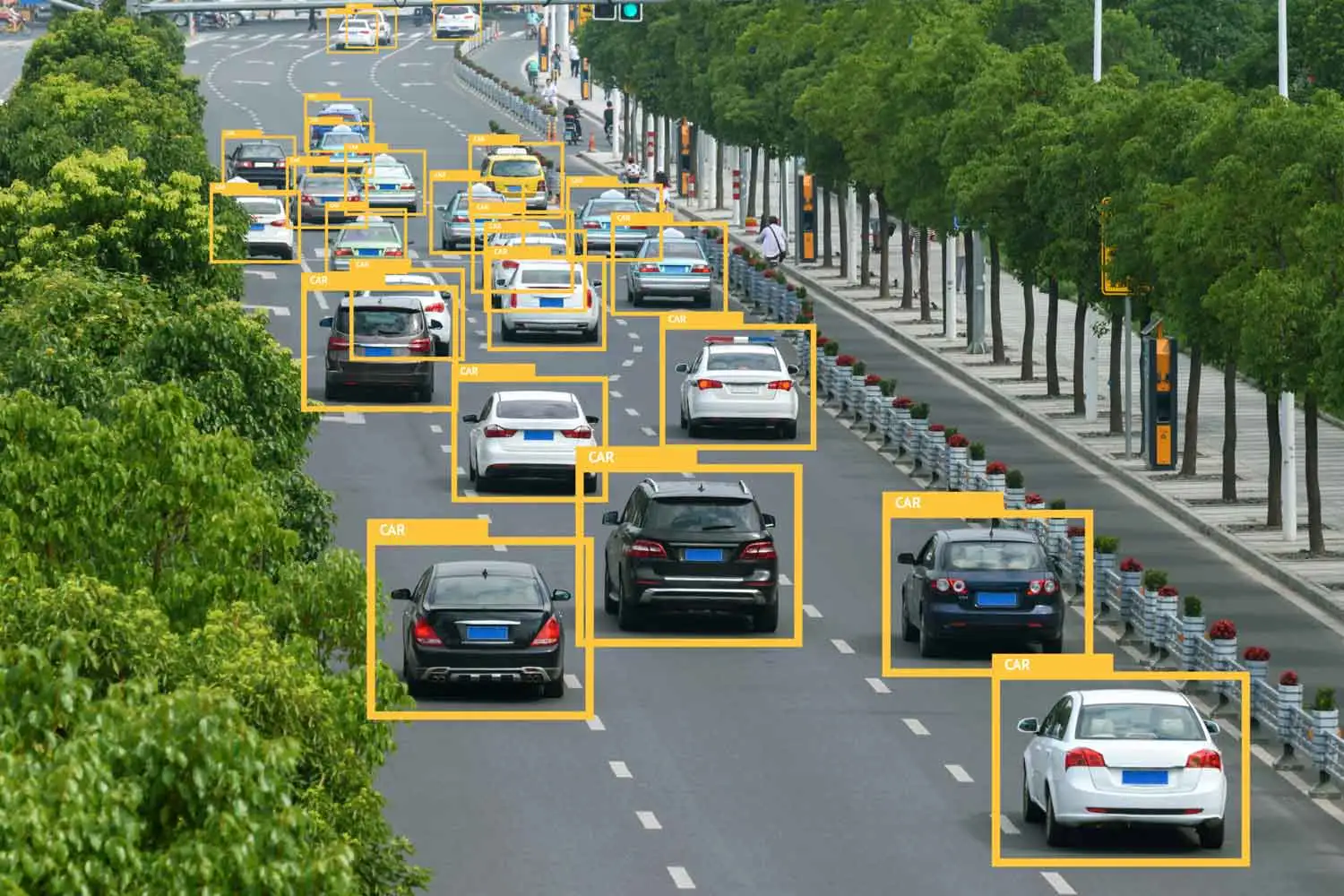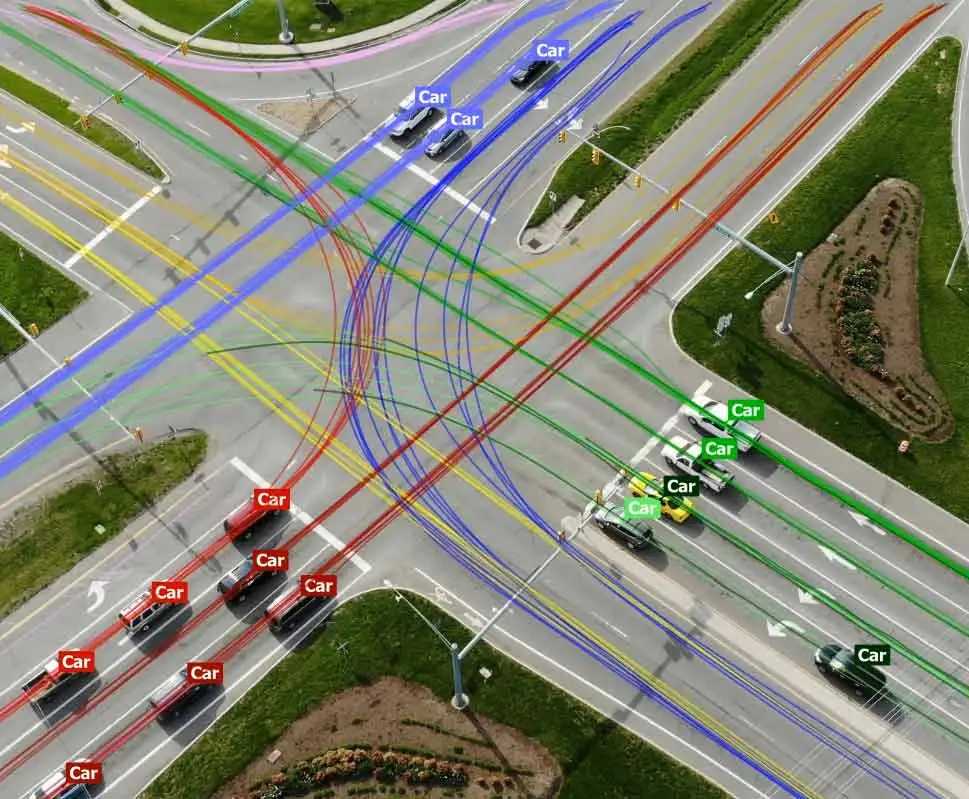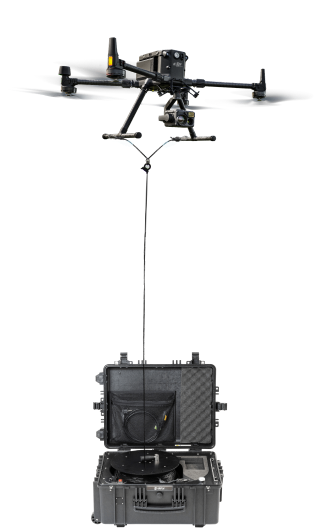Monitoring Traffic: Managing Crowds with Drones
Equipped with advanced sensors, drones offer an aerial view of traffic, helping authorities quickly spot and respond to incidents. By monitoring traffic density, flow patterns, and bottlenecks, drones help prevent congestion and reduce accident risks.
The Use of Drones for Traffic Monitoring in Cities and Highways
L'usage de public safety drone for is rapidly increasing, transforming how cities manage and respond to traffic conditions. With advanced sensors and cameras, drones for monitoring traffic provide real-time aerial views, letting authorities. Allowing for accurate monitoring of traffic density, flow, and congestion.
This technology, which also extends to drone crowd monitoring, is changing how we handle traffic issues. Let us examine how drones assist in maintaining clear roads and managing pedestrian crowds effectively.
Imagine driving through a busy city or on a crowded highway when traffic suddenly stops. Traditional traffic devices, like cameras and sensors, have their limits. UAVs, however, can fly over traffic hotspots and provide real-time traffic information.
They offer a complete view of traffic conditions from above. Additionally, they can monitor pedestrian crowds, aiding in crowd control for events security.
With cameras and sensors, UAVs capture extensive data on traffic flow and can cover large areas quickly and efficiently. From city streets to highways, UAVs are transforming traffic monitoring and management. These UAVs also play a critical role in crowd management operations by observing crowd movement patterns and density of traffic.

What is Drone Traffic Monitoring ?
Drone traffic monitoring uses UAVs to collect real-time data on traffic conditions. These UAVs are equipped with cameras and sensors to monitor traffic flow, congestion, and accidents. The data collected helps optimize traffic management strategies. Moreover, the same technology can be adapted for monitoring of crowds, providing insights into pedestrian crowd dynamics and aiding law enforcement drone teams efforts.
Traffic Congestion in Urban Areas: A Major Problem
Urban areas often experience heavy traffic movement. Continuous lines of vehicles, sounding horns, and delays are frequent. Traffic congestion results in longer travel times, increased pollution, and reduced productivity.
Traditional traffic monitoring often misses the complete picture. UAVs, however, can quickly identify congestion points and help reduce traffic. They also monitor pedestrian crowds, ensuring safe and efficient movement of people during high-density events.
Drones to Monitor and Manage Traffic
UAVs offer a dynamic solution for monitoring traffic and managing it. They fly over congested areas, capturing detailed images and videos. With advanced sensors, UAVs analyze traffic flow patterns and identify bottlenecks, aiding traffic management authorities in making informed decisions. Just as firefighting drones enhance public safety by responding to emergencies, drone crowd monitoring can assess crowd density and movement in real-time.
Different Methods for Monitoring Traffic
It is clear to see why public safety drones are growing in popularity. And with automation, artificial intelligence, and advanced sensors, they are becoming more sophisticated.
New DFR programs are strengthening law enforcement, but they come with challenges, including privacy risks.
Industry manufacturers are actively working to overcome these challenges to improve the efficiency of police and fire operations, with the ultimate goal of saving lives and preventing incidents. Drone as First Responder could shape the future of emergency response.
Traffic Management Systems
Traffic management systems benefit greatly from UAV integration through various methods:
Visual Surveillance for Traffic Control
Visual surveillance involves UAVs equipped with cameras to capture real-time footage of traffic scenes. This footage helps identify congestion, accidents, and other issues, providing a comprehensive view of traffic flow and congestion points. It also supports monitoring of crowds, ensuring crowd control measures are effectively implemented.
Lidar-Based Monitoring
LIDAR uses laser beams to measure distances and create detailed 3D maps. When UAVs carry LIDAR sensors, they provide precise data on traffic density, speed, and road conditions. This method effectively monitors heavy traffic movement and identifies road capacity issues. LIDAR can also map pedestrian crowd movement patterns, aiding in crowd management operations.
Radio Frequency Identification (RFID)
RFID technology tracks vehicles as they pass RFID readers on roads and highways. UAVs with RFID readers collect real-time data on vehicles. This helps understand traffic flow and make better decisions on signal timing and route planning. Similarly, RFID can be used to monitor crowd movement and density in public spaces.
Thermal Imaging
Thermal imaging cameras detect temperature changes on road surfaces. UAVs equipped with thermal cameras identify congestion based on heat patterns. This method is useful in low-visibility conditions or at night, ensuring continuous traffic monitoring. Thermal imaging assists in monitoring crowds, identifying safety risks, underscoring the role of drones as first responders.
Mobile Communication-Based Monitoring
UAVs can use mobile networks to gather data from smartphones, tablets, and GPS devices. This allows them to analyze traffic patterns and congestion in real-time. This modern approach leverages mobile devices for effective monitoring traffic. Additionally, it can monitor crowd movement patterns, ensuring effective crowd control during large gatherings.
Artificial Intelligence (AI)-Based Monitoring
AI-based monitoring uses advanced algorithms to analyze data from UAVs, identifying patterns, predicting traffic flow, and suggesting optimal management strategies. It functions like a highly intelligent system solving traffic problems. AI also enhances crowd monitoring systems, predicting crowd movements and improving crowd management operations.
Combining Technologies for Better Traffic Flow and Congestion Management
The true potential of UAV traffic monitoring is realized by combining these technologies. Traffic management systems gain a comprehensive understanding of traffic conditions by combining visual surveillance, LIDAR, RFID, thermal imaging, mobile communication, and AI.
This integration enables accurate prediction and efficient management of congestion. This helps predict and manage congestion effectively. This integration also enhances crowd monitoring systems, ensuring effective crowd control and management.
Benefits of Drone Traffic Monitoring
Drone traffic monitoring offers numerous benefits, including:
Advantages of Drone Traffic Monitoring
A primary advantage is real-time data. Unlike static devices, UAVs can move around and cover large areas quickly. This mobility allows for quick responses to incidents, optimized signal timings, and efficient rerouting of traffic. They also provide real-time monitoring of crowds, enhancing crowd control measures during events.
Traffic Management in Remote Areas
UAVs are particularly valuable in remote areas, such as rural roads or highways far from urban centers. Traditional monitoring methods may be inadequate because of infrastructure limitations. UAVs for monitoring traffic, similarly, search and rescue drones cover easily these areas, providing crucial traffic data and enhancing road safety. They also assist in crowd management operations in remote locations, ensuring safety during large gatherings.
Cost-Effectiveness of Traffic Monitoring Operations
Cost-effectiveness is another significant advantage. While UAV costs vary, drone traffic monitoring is generally more economical than traditional methods. UAVs can cover larger areas with fewer resources, reducing the need for extensive infrastructure and personnel.
Their flexibility allows for quick and efficient deployment. This applies to both traffic monitoring and crowd management operations, making UAVs a cost-effective solution.
Challenges of Using Drones for Traffic Monitoring
Despite the benefits, UAV monitoring traffic faces several challenges:
Traffic Congestion Management Concerns
Privacy concerns arise because UAVs have cameras and sensors capable of capturing images and data of people and vehicles. Authorities typically set guidelines, such as restricting UAV flights to specific times and places and blurring data before analysis. These concerns extend to drone crowd monitoring, where the privacy of individuals in pedestrian crowds must be protected.
Drone Traffic Monitoring Challenges
Implementing UAV traffic monitoring involves regulatory barriers, safety concerns, and public acceptance issues. Ensuring safe and effective use of this technology requires addressing these challenges comprehensively. Public trust in the responsible use of UAVs is essential. This trust is also crucial for the successful deployment of crowd monitoring systems.
Real Examples of Traffic Monitoring Performed by Police Officers
In cities like Los Angeles and London, police officers use UAVs to monitor traffic during major events, emergencies. These police drones provide live feeds, enabling officers to manage traffic flow and respond to incidents more effectively. Similarly, drones monitor large pedestrian crowds during events to ensure safety and efficient crowd management during high traffic volumes.
Conclusion about Monitoring Traffic
Monitoring traffic with UAVs is transforming traffic management. UAV traffic monitoring provides immediate data on traffic flow, congestion, and incidents, significantly improving transportation system efficiency and safety.
Dealing with issues like privacy, regulations, and public acceptance is key to safely and effectively using this technology. With UAV technology advancing, we anticipate broader adoption, resulting in safer, more efficient, and sustainable traffic management systems.
Additionally, the expansion of UAVs into drone crowd monitoring promises enhanced safety and efficiency in managing pedestrian crowds and large events.
Monitoring Traffic FAQ
What is drone traffic monitoring?
Drone traffic monitoring uses UAVs with sensors to gather real-time data on traffic flow, congestion, and incidents. It also includes monitoring of crowds during events.
How do drones assist in traffic control?
UAVs give live aerial views and data, aiding authorities in efficiently managing traffic by identifying issues, adjusting signals, and rerouting traffic as necessary. They also assist in crowd control by monitoring pedestrian movement and density.
What are the benefits of using drones for traffic monitoring?
Benefits include real-time data, coverage of remote areas, cost-effectiveness, and enhanced traffic management capabilities. They also enhance crowd management operations by providing real-time insights into crowd movement.
Are there any privacy concerns with drone traffic monitoring?
Yes, privacy concerns exist because of the capturing of images and data. Guidelines are typically established to address these concerns, including those related to crowd monitoring.
What challenges do authorities face in implementing drone traffic monitoring?
Challenges include regulatory barriers, safety concerns, public acceptance, and technical limitations. These challenges are also relevant to crowd monitoring systems.
Can drones be used for traffic monitoring in rural areas?
Absolutely. UAVs are particularly useful in remote areas with limited infrastructure, providing crucial traffic data that traditional methods might miss. They are also effective in crowd management in these areas.






